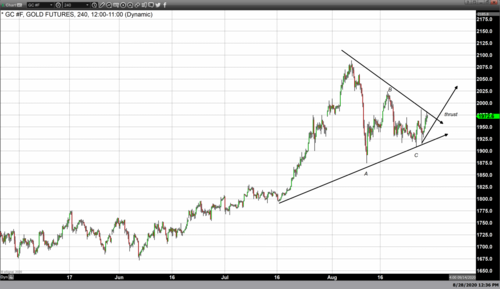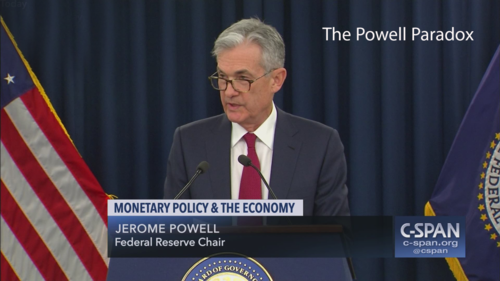
The ‘J. Powell Paradox’ and Gold Pricing
The ‘J. Powell Paradox’ is a scenario in which the Federal Reserve begins to send out signals indicating moves in the future, which are then backed up by a more comprehensive explanation of what the Fed is planning on doing, and their intent or desired result from these actions. However, market participants are not quick to react to the anticipated changes. In some cases, this creates a knee-jerk effect opposite to what the Fed had hoped for and the common sentiment.

Yesterday the long-awaited economic summit held virtually began with a keynote speech by, Jerome Powell. For weeks prior the Federal Reserve began dropping subtle hints as to some upcoming changes in their monetary policy. They began to release information prior to Powell’s Keynote address in order to accomplish two things.
First, was to not rattle or shake off the market. They were embarking on a major change in their monetary policy and wanted their ideas to be already on the public’s mind. Secondly, was to have some a semblance of transparency.
True to their words through the chairman the Federal Reserve announced yesterday that they had no intent on being hasty to raise interest rates as they work to achieve more economic stability in the United States. By letting inflation run a little hot, it can allow more focus upon the first part of their dual mandate, which is to reach maximum employment.
In the past, during recent periods of economic uncertainty they maintained a maximum target of 2% in regards to inflation. During the points in time in which inflation would get close to that target interest rates were raised, thereby slowing down the economic recovery. On certain instances raising rates too quickly resulting in a setback to aid the United States economy.
Many analysts including myself, believe that if the Fed followed through with this revised monetary policy it would have a bullish effect in the ‘risk-on’ market. Take As well as take the U.S. dollar lower which would concurrently have an extremely bullish effect on the ‘safe haven’ asset class such as gold and silver. However, this assumption did not take into account the enigma that exists as market participants react to changes by the Fed involving their monetary policy.

Price changes that occurred on Wednesday, Thursday and today were all examples of this paradox unfolding. The day prior to chairman Powell’s keynote speech (Wednesday, August 26) gold futures rose dramatically gaining about $40 on the day in anticipation of a major change in monetary policy by the Fed. However, on the day of the keynote speech the anticipated market reaction was 180° different than the traders and investors had anticipated.
Rather than the initial anticipated reaction to the shift in monetary policy. The preliminary reaction resulted in a volatile trading session that sent bullion pricing higher prior to chairman Powell’s speech. At the time the speech began gold futures basis the most active December contract had traded to an intraday high of $1980. Then just as Powell began his keynote speech, gold pricing eroded and then reversed taking gold to an intraday low of $1914.
The majority of analysts, including myself interpreted yesterday’s decline as a direct result of profit-taking. However, a more plausible explanation was that market participants were not able to immediately interpret the ramifications and of such a major shift in the monetary policy of the United States.
This in a nutshell the ‘J. Powell Paradox’ refers to the way market participants react to a shift in monetary policy by the Federal Reserve.
The reaction seems to involve a two-step process. First and foremost is a major knee-jerk reaction which can cause market prices to move strongly in both directions in a single trading session. In the case of yesterday’s activity, the knee-jerk reaction resulted in gold and silver prior to chairman Powell’s address moving sharply higher, and then reverse course and prices moved in the opposite direction that was anticipated.
Secondly, is a time delay before the investment community at large is able to fully comprehend the potential outcome and intended results of this historical move. In the case of the announcement made by the Federal Reserve it would take a full day before traders were able to take ownership of the idea that these actions would have a profound change in gold prices, in essence shifting market sentiment in gold and silver from bearish to bullish, whiles always being underlying bullish.
Wishing you as always, good trading,
By Gary Wagner
Contributing to kitco.com
David